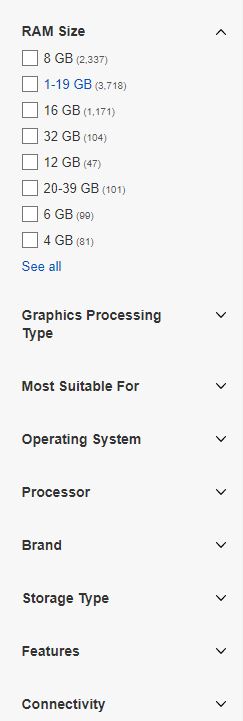eBay Item Specifics
We get ranty on this page…
Oh eBay sellers…
I’ve been working on eBay for too long. I’m jaded. I’ve lost the will with listing. Having spent the better part of a decade either selling on marketplaces like eBay, or managing a portfolio of seller’s listings and storefronts. I’ve lost hope.
To be fair, eBay has changed over the years. It’s grown, adapted, got confused, shot its own foot, found itself, lost itself, focused, centralised, decentralised, shot its other foot – all with little change to the overall user experience of a seller or buyer. But it will make you a lot of money if you give it what it wants.
eBay, like all marketplace channels, has core data principles. There are correct ways of doing things on eBay. There has always been a long term advantage to formatting listing data correctly. There has always been a ‘right way’, despite some who have argued otherwise over the years.
So why do eBay sellers keep making the same mistakes? I can be understanding to the new comers. You aren’t sure what is right or wrong. There are mountains of information out there, some of it contradicting, so how on earth can you possibly ‘know’ what is ‘right’, especially if you are also launching a new site, managing a warehouse, arguing with suppliers, and ten other small business owner jobs you can’t escape.

Let’s talk about item specifics.
Why do the rest of you keep making the same mistakes? You seasoned veterans on eBay, with your small group of listings which have 10 billion sales on them, I’m looking at you. You ‘eBay Experts’ who were hired to run, grow and expand your company’s eBay accounts. I’m eye-balling you.

Does the left look familair?
This image is the left hand page of eBay, under Men’s Trainer shoes.
If you try to search for ‘men’s trainers’ on eBay, I wish you luck. 6 years may pass and your chances of viewing every listing will still be a distant goal.
Filters however make sure you don’t have to!
If you are looking for shoes, its fairly certain you know your size. I would hope so, for your sake.
You likely have some notion of the colour and style you want. Maybe you’re smart enough to also know what upper material you want. I personally couldn’t care less, but each to their own.
Using these filters narrows down the search results. Why look at a listing when they don’t have your size in stock? Why check out the Brand, size and style you want, if it’s not in ultra violet neon superman red?
Working in online retail, it’s probably a bad idea to admit publicly I hate shopping. Oh well, it’s not like my livelihood is dependent on my credibility.
I want to buy the item fast. When I shop, I have a mission. I want it executed with precision and speed. I want accuracy. Like a Navy Seal SAS Commando Spy Shopper, I’m in and out with the package secured before anyone saw me.
Help me.
Get your item specifics in place, which plug into these item specifics. Help me buy your item quickly and accurately.
I’ll admit it’s not easy. If you have a catalogue (catalog) of 20,000 SKUs, across multiple categories, and your supplier’s data is poor, it’s a big project. If you are a small team or have limited time and resources, this isn’t something you need right now. The item specifics change per category, per gender, per region and per valid value. This is a data mapping mission, especially if your data isn’t ideal to begin with.
But it’s worth it. Conversion will improve. Visibility will improve. You’ll incur less questions and fewer returns if your data is in the right place for a buyer to find. Sales, with time, will improve.
